Outer Space & Universe
Outer Space & Universe
Space, also known as outer space, is the near-vacuum between celestial bodies. It is where everything (all of the planets, stars, galaxies and other objects) is found.
On Earth, space begins at the Kármán line (100 km above sea level). This is where Earth's atmosphere is said to stop and outer space begins. This is not a firm boundary but is a convention used by scientists and diplomats.
Items in space are free to move back and forth; up and down; and left and right. These three dimensions are what make 3D space. Items also move forward through time, which is sometimes called the fourth dimension.
The majority of space contains very little matter and so most of it is a vacuum. Scientists do not know how big space is but we do know that space is extremely big, and is always expanding.
According to the big bang theory, all matter and energy in the Universe was compressed into a very small space. Then it exploded and started expanding. Space is still growing in size today; this means the distance from one galaxy to distant galaxies is getting longer.
Gravity is the force that keeps the Moon in orbit around the Earth and the planets in orbit around the Sun. Gravity can stretch and bend space similar to how a heavy ball placed on a stretched sheet of rubber will cause the rubber to stretch. The scientist who discovered that space can bend is named Albert Einstein. How gravity bends space is part of his theory of general relativity.
Astronauts, Cosmonauts, Taikonauts and Spationauts
An astronaut is any person who is trained by NASA to travel and perform tasks in space. Although the space traveler may not necessarily be a United States citizen, each astronaut does go through a rigorous training regiment by the National Aeronautics and Space Administration. Other space travelers go by other names then astronaut depending on their country of origin.
In the United States, astronaut is derived from the Greek words ástron (star) and nautis (sailor). While, in Russia, a space traveler goes by the name космонавт (English: cosmonaut), which is derived from the Greek words kosmos (universe) and nautis (sailor). Westerners call a space traveler from China a taikonaut, based on the 1998 writings of Chiew Lee Yik and Chen Lan where the term tàikōng (great emptiness), Chinese for “space”. In China, the term yuháng yuán (universe navigator) is used for space traveler.
Only the United States of America (United States), Russia (earlier, the Union of Soviet Socialist Republics), and the People’s Republic of China (China) have sent manned spacecraft into space. Other countries have assisted these countries by sending their own space travelers on space missions. For instance, a French space traveler is called a spationaut (from the French word spationaute), which is derived from the Latin spatium (space) and Greek nautis (sailor). (plural in Greek nautes = sailors)
-
01:24
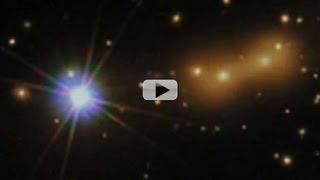
Most Distant Galaxy: New Candidate Found | Video
Added 921 Views / 0 LikesLikely most distant object known, galaxy MACS0647-JD was recently found by the Great Observatories - Hubble and Spitzer Space Telescopes, looking back to 420 million years after the Big Bang in the region between Ursa Major and Minor.
-
01:52
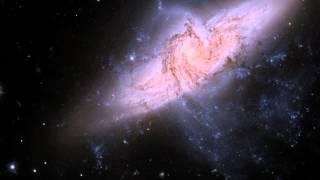
Hubble Spots Galaxies Lined-Up | Video
Added 833 Views / 0 LikesA study of galaxies NGC 3314A and NGC 3314B shows that they are moving independently of each other and are separated by tens of millions of light years. Data derived from Hubble Space Telescope imagery indicates they are not on a collision course.
-
06:04

New Horsehead Nebula Image Shows Remarkable Depth | Video
Added 801 Views / 0 LikesIn celebration of the Hubble Space Telescope's 23rd year in orbit, astronomers captured an infrared image of the famous collapsing interstellar cloud. Located in the Orion constellation, it is one of the most recognizable objects in the night sky.
-
02:43

Hubble's Extreme Deep Field Sees Farther Back In Time | Video
Added 817 Views / 0 LikesAstronomers have combined Space Telescope exposures taken over a decade to create the deepest look into the Universe yet. Scientists explain how they assembled the XDF (eXtreme Deep Field).
-
01:45
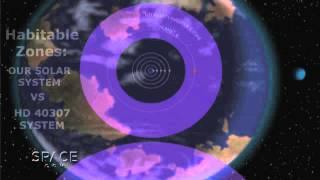
Super-Earth May Have Liquid Water | Video
Added 860 Views / 0 LikesA newly discovered "super-Earth" planet, HD 40307g, is in the "Goldilocks Zone;" just the right place to support liquid water. It resides in a system of six worlds orbiting a, stable, elderly dwarf star 44 light years away.
-
01:57
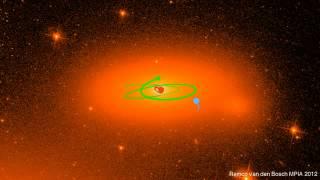
Super-Giant Black Hole Discovered | Video
Added 684 Views / 0 LikesThis animation depicts the orbit of a giant, super-massive black hole discovered in the compact galaxy NGC 1277. One second represents 22 million years of time in the simulation. Credit: NASA/ESA/Fabian/Remco C. E. van den Bosch of MPIA (animation)
-
02:04
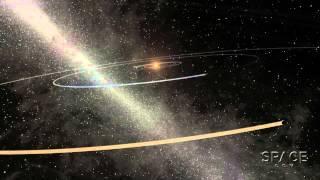
Two Alien Oceanic Earth-Like Planets Found? | Video
Added 799 Views / 0 LikesA planetary system 1200 light years from Earth may contain two worlds entirely covered by global oceans. Kepler 62e and 62f are in the habitable zone of a roughly Sun-like star. Each planet is slightly larger than Earth.
-
01:16
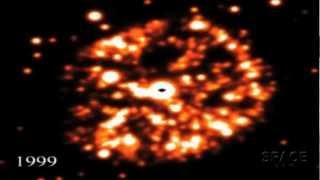
Blown-Up Star Seen Expanding - 58 Year Time-Lapse Video
Added 761 Views / 0 LikesIn 1901, the star GK Persei, 1,300 Lights Years from Earth, exploded. Images of the remnant (Nova Persei 1901) by the Isaac Newton Telescope and the Nordic Optical Telescope in Spain spliced together allow a 3-D model to be created.
-
00:57
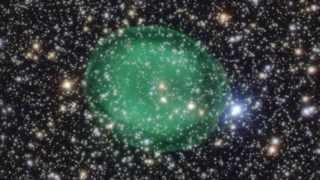
'Green Bubble' Planetary Nebula Seen In Greatest Detail Yet | Video
Added 833 Views / 0 LikesEurope's Very Large Telescope captured imagery of planetary nebula IC 1295. It can be found in the constellation of Scutum (3300 light years away).
-
04:04
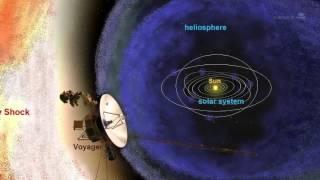
Sun's Magnetic Field Will Soon Flip - Stormy Space Weather Ahead? | Video
Added 829 Views / 0 LikesDuring the height of the solar cycle, the magnetic field changes polarity, pushing a ripple effect across the Solar System that's detectable by even the far-away Voyager probes.
-
01:10
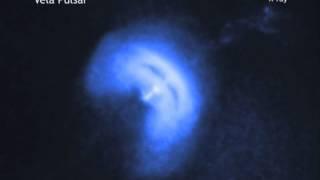
Fast Spinning Pulsar's Wobbles Whip-Up Plasma Jets | Video
Added 842 Views / 0 LikesJust 12 miles across, a collapsed star 1000 light years from Earth spins more than 11 times each second. The Vela pulsar belches charged particles at 70% of light-speed, seen here in this 8-frame movie from the space-based Chandra X-ray Observatory.
-
00:39
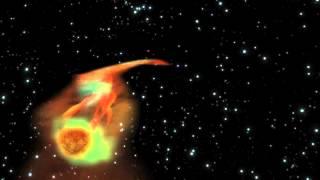
Black Hole Snacks On A Super-Jupiter | Animation
Added 801 Views / 0 LikesAstronomers have detected a black hole consuming the outer layers of a brown dwarf or a giant planet. Observations of galaxy NGC 4845 by ESA's Integral Space Observatory and XMM-Newton revealed an x-ray flare consistent with black hole activity.
-
04:25
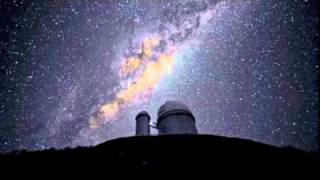
16 New Super-Earths Just Discovered
Added 842 Views / 0 LikesAstronomers using Europe's HARPS telescope have discovered 50 new exoplanets orbiting nearby stars - including these 16 super-Earths, one of which lies within its star's habitable zone.
-
04:49
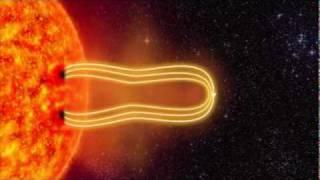
Fantastic Aurora: Inside the Sun to Earth's Poles
Added 781 Views / 0 LikesPlasma from solar flares or coronal mass ejections travel along solar wind to ultimately produce aurora's in Earth's polar regions. This visually stunning explanatory video takes you on a journey from sun's interior to the Earth's upper atmosphere. Credit
-
00:54
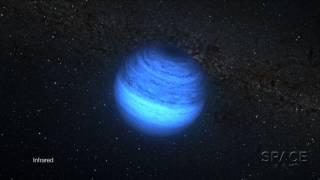
Rogue Planet Has No Parent Star | Video
Added 757 Views / 0 LikesAstronomers have discovered a "rogue planet" (no, NOT Nibiru!) that seems to be travelling with a set of young stars -- called the AB Doradus Moving Group -- but isn't orbiting any of them. If it's part of that family, scientists can gauge
-
02:07

Massive Diamond Planet Orbits Neutron Star, Astronomers Find
Added 805 Views / 0 LikesUsing the giant Parkes Radio Telescope in New South Wales, Australia, astrophysicists have found an incredibly dense planet comprised of crystalized carbon -- the stuff of diamonds -- in orbit about a pulsar.
-
01:34
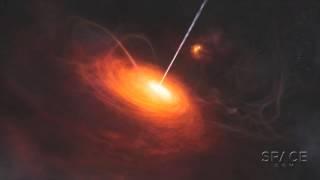
Most Powerful Quasar Discovered | Video
Added 976 Views / 0 LikesAstronomers have found a quasar that's more than five times more powerful than any previously seen. Quasars are mega-bright geysers of matter and energy powered by super-massive black holes at the centers of young galaxies.
-
01:17

Milky Way and Andromeda Galaxies Collision Simulated | Video
Added 916 Views / 0 LikesUsing data from the Hubble Space Telescope, scientists have developed this simulation of the head-on collision of our Milky Way galaxy and the Andromeda galaxy. Estimated to occur in 4 billion years.
-
01:50

Amazing Universe Fly-Through: Largest Sky Map Revealed | Video
Added 761 Views / 0 LikesNearly 400,000 galaxies are represented in an animation derived from the Sloan Digital Sky Survey (SDSS) data release 7. Miguel Arago and Alex Szalay of John Hopkins University and Mark Subbarao of the Adler Planetarium created this amazing view.
-
00:26
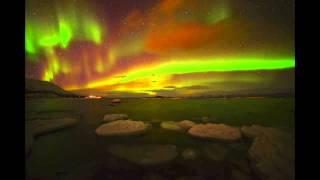
Red and Green 'Christmas' Auroras Light Up Skies Over Sweden | Video
Added 911 Views / 0 LikesChad Blakley (lightsoverlapland.com) grabbed his camera on Christmas Day 2013 and captured the festive Northern Lights above the frozen shore of Lake Torneträsk in Abisko National Park.
